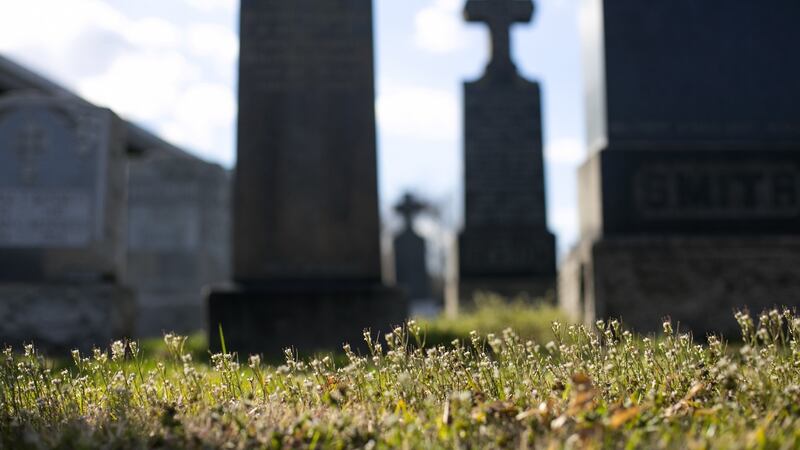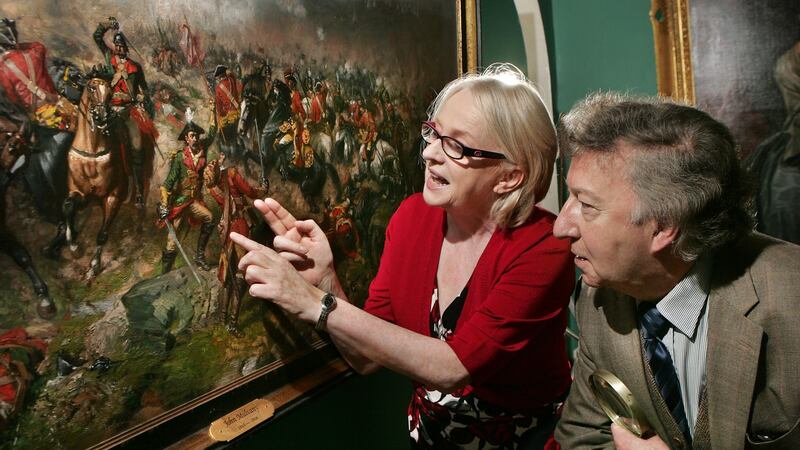Walking along Manhattan Avenue in Brooklyn, Geoffrey Cobb stopped at Noble Street and pointed to a corner building where, above what is now a Japanese restaurant, John Mulvany, an Irish-born painter, lived more than a century ago.
Mulvany enjoyed a prosperous career in the late 1800s that made him famous in both America and Ireland for his paintings depicting the Civil War, the American West and Irish history.
He influenced painters including Frederic Remington and William Merritt Chase, yet he was largely forgotten, partly because he spent the last decade of his life living in decline in Greenpoint, Brooklyn, a poignant coda to more glorious years of artistic acclaim and popularity.


But this Greenpoint period has taken on new importance as many of his lost paintings are being rediscovered and commanding high prices.
Cobb, a local historian and New York City schoolteacher who lives in Greenpoint, gathered old newspaper clippings reporting that Mulvany had been found in May 1906 floating in the East River, after weeks of wandering the streets in rags.
"Ends Famous Career in Mystery," read a headline in The New York Evening Telegram.
"Took Own Life, Maybe" was the headline on a front-page article in The New York Press positing that the artist might have "dropped off the end of a ferryboat in the darkness".
Painting angels
Despite struggles with alcohol, Mulvany had vied for painting commissions and exhibitions to try to rejuvenate his career. He was befriended by George Rowe, a local newspaper editor, who recalled finding the once prominent artist working as a handyman painting angels for a business that made church pulpits. That factory stood on what is now McGuinness Boulevard, said Cobb, who is originally from Co Armagh.
In a 1906 New York Times article, Rowe recalled meeting Mulvany at the factory and providing him with commissions and connections to prominent subjects. Rowe offered the artist studio space in his newspaper's building on Greenpoint Avenue, Cobb said, standing in front of the location, which is now an entertainment venue called the Brooklyn Bazaar.
Cobb said he first came across a mention of Mulvany while researching The King of Greenpoint, Cobb's recent biography of the charismatic political power broker Peter J. McGuinness.
A restless and sociable genius, Mulvany set up short-term studios in more than 20 cities during his career, but his longest stint was in Greenpoint, said Anne Weber, 74, a great-grandniece of the artist.
He was born in 1839 to tenant farmers in Co Meath, Weber said. He fled the Great Famine, immigrating to New York in 1851 as a stowaway when he was 12.
Mulvany worked on the Erie Canal before becoming a student at the National Academy of Design in Manhattan. He then worked for the prominent Civil War-era photographers Mathew Brady and Alexander Gardner, and was sent by a patron to Europe to study painting.
Studio destroyed
He returned to Chicago in 1871, but his studio was destroyed by the Great Chicago Fire that year, so he travelled westward and began gaining a national reputation for his paintings of the American West.
His 1881 masterpiece Custer's Last Rally, a 20ft wide depiction of the battle of the Little Bighorn, toured the country for years before joining the collection of the food mogul Henry J. Heinz, who had Mulvany paint a replica of it in 1900 in Greenpoint.
Charles Trois, an investor and collector in Texas who now owns what he calls the original Custer painting, said this week that he was close to completing a deal to sell it for around $25 million, a sum that he called ironic, given how Mulvany was viewed in his final years.
“He was a has-been” by then, Trois said. “If he only knew what his work was going for today.”
The Irish counterpart to the Custer painting was Mulvany's 1885 Battle of Aughrim, a vivid depiction of a pivotal, bloody fight in Ireland in 1691 that many Irish nationalists believe contributed to centuries of British dominance of the Irish.
Exhibited in Dublin, the painting was heralded as a call to arms against the British and extolled by prominent Irish nationalists such as Michael Davitt, who said Mulvany deserved “the thanks of the entire Irish race”.
The painting disappeared for nearly a century, until an art historian in Dublin, Niamh O’Sullivan, spotted it on eBay in 2010, misidentified as an American battle scene. O’Sullivan contacted Weber, who flew to the seller in San Francisco to confirm the painting’s authenticity.
The Gorry Gallery in Dublin bought the painting, listed it for €100,000 – about $130,000 at the time – and sold it to a private collector in Ireland.
Another Mulvany painting, Preliminary Trial of a Horse Thief, is currently listed for $250,000 by a Maryland-based gallery.
Old flame
In 1897, his fame and fortune ebbing, Mulvany moved to Greenpoint, where his sister, Alice Muldoon, lived on Leonard Street. He was troubled by career disappointments and sadness over the loss of an old flame, Lucy Deere, an artist and John Deere tractor heiress.
In Greenpoint, Mulvany sold his paintings quickly and relatively cheaply. His sister had to keep him from pawning a prestigious medal he had received years earlier from the Royal Academy of Fine Arts in Munich.
The Times' coverage of his death described him as having lived a "precarious life" and said that he had become a "waif" and "a ragged derelict, uncertain of a night's lodging or a day's food".
In May 1906, several weeks after being evicted for not paying rent, he was pulled from the river near Sixth Street in Williamsburg. He was 66. In his pockets were clippings extolling his achievements, some recent rejection letters and a sad love poem, according to newspaper reports, most of which presumed suicide.
Other theories suggested that Mulvany might have been killed as revenge for having revealed the identity – by working it into a painting – of a man who murdered his friend.
Rowe blamed himself, saying that an offhand suggestion to a desperate, ragged Mulvany had been darkly misinterpreted. “The story goes that Rowe told Mulvany to jump into the river, to clean himself up,” Cobb said, “but Mulvany took it the wrong way”.
Weber said that Mulvany had learned that he had throat cancer, “which was then incurable”.
And so the life of a painter-adventurer that began in Ireland and flourished in the American West ended dramatically in Brooklyn. He is buried in Calvary Cemetery in Queens.
"He was an Irishman through and through," Weber said. "The whiskey, the language, the history and a love of Ireland that he kept with him to the end of his days." – © New York Times News Service

















